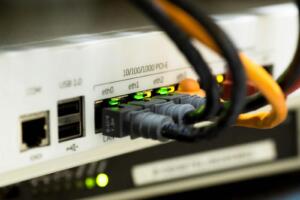When setting up a stable and fast internet connection, an Ethernet cable can make a significant difference. Ethernet cables offer a reliable, wired connection that can outperform wireless options, especially when it comes to speed and consistency.
Buying Ethernet Cable
When choosing an Ethernet cable, several factors need to be considered, such as the cable’s category, length, shielding, and overall quality. An important factor is your cable’s intended use. Whether for work, video calls, learning about games on unorules.nz, or other platforms, a standard Cat5e or Cat6 cable will suffice. For gaming or streaming, you’ll need a high-speed cable like Cat6 or Cat6a.
Ethernet Cable Categories
Ethernet cables come in various categories, which define their performance in terms of speed and distance. The most commonly used categories include:
- Cat5e (Category 5e): Supports speeds up to 1 Gbps over distances of up to 100 meters. It’s an affordable option for everyday use.
- Cat6 (Category 6): Offers higher speeds (up to 10 Gbps) over shorter distances (55 meters). Ideal for users who need faster connections.
- Cat6a (Category 6a): An enhanced version of Cat6, supporting 10 Gbps speeds over up to 100 meters. It’s a good choice for longer distances or more demanding tasks.
- Cat7 (Category 7): Known for its high performance, supporting speeds up to 10 Gbps over 100 meters with better shielding against interference.
- Cat8 (Category 8): The latest and fastest, supporting speeds up to 40 Gbps. Cat8 cables are mostly used for data centers and high-performance networks but may not be necessary for everyday use.
For most home setups, Cat6 or Cat6a cables suffice, providing a balance between performance and price.
Ethernet Cable Length
Cable length impacts functionality. Shorter cables (1-5 meters) are ideal for close setups, while longer cables (10+ meters) suit larger spaces but may experience signal loss, especially with lower-category cables.
Shielding
Ethernet cables can have shielding to protect against electromagnetic interference (EMI). Unshielded Twisted Pair (UTP) cables are fine for most home setups, while Shielded Twisted Pair (STP) cables, with added foil shielding, are better for areas with high interference or outdoor use.
Connector Styles
Ethernet cables use RJ45 connectors, which are compatible with most devices. Gold-plated connectors resist corrosion and provide a more reliable connection over time.
Conductor Gauge
The wire gauge, measured in AWG, indicates thickness. Thicker wires (lower AWG, like 24 AWG) are better for longer distances, but 24 AWG or 26 AWG cables are usually sufficient for home use, offering a good balance of performance and flexibility.
Jacket Ratings
The cable’s jacket protects the internal wires. PVC is common for indoor use, while LSZH (Low Smoke Zero Halogen) is used where fire safety is important, like in enclosed spaces or air ducts.
Special Applications
In some cases, you may need Ethernet cables designed for specific environments. Outdoor-rated cables can withstand sunlight, moisture, and temperature changes. Make sure to choose cables suited for outdoor or in-wall use to prevent damage.
Choosing Ethernet Cables
Consider your speed needs—Cat6 or higher is best for gaming or streaming. Ensure the cable is the right length to avoid signal loss. For areas with interference or outdoor use, choose shielded cables. While higher category cables cost more, they offer better performance, especially for larger setups.






